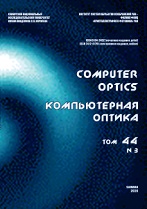|
This article is cited in 9 scientific papers (total in 9 papers)
IMAGE PROCESSING, PATTERN RECOGNITION
Bagged ensemble of fuzzy classifiers and feature selection for handwritten signature verification
K. S. Sarin, I. A. Hodashinsky
Tomsk State University of Control Systems and Radioelectronics, Tomsk, Russia
Abstract:
Handwritten signature verification is an important research area in the field of person authentication and biometric identification. There are two known methods for handwriting signature verification: if it is possible to digitize the speed of pen movement, then verification is said to be on-line or dynamic; otherwise, when only an image of handwriting is available, verification is said to be off-line or static. It is proved that when using dynamic verification, a greater accuracy is achieved than when using static verification. In the present work, the amplitudes, frequencies, and phases of the harmonics extracted from the signature signals of the X and Y coordinates of the pen movement using a discrete Fourier transform are used as characteristics of the signature. All signals are pre-processed in advance, including the elimination of gaps, the elimination of the angle of inclination, the normalization of position and scaling. A fuzzy classifier is proposed as a signature verification tool based on the features obtained. The work examines the effectiveness of this tool in the ensemble, as well as using a procedure for feature selection. To build an ensemble of classifiers, a well-known bagging method is used, and the feature selection is based on the determination of mutual information between a feature and a class of an object. Experiments on signature verification on the SVC2004 data set with the construction of a fuzzy classifier and ensembles of three, five, seven and nine fuzzy classifiers were conducted. Experiments were carried out both with the use of the feature selection procedure and without selection. The efficiency of the classifiers constructed is compared with each other and with known analogues: decision trees, support vector machines, discriminant analysis and k-nearest neighbors.
Keywords:
handwritten signature, fuzzy classifier, ensemble, bagging.
Received: 04.03.2019
Accepted: 28.05.2019
Citation:
K. S. Sarin, I. A. Hodashinsky, “Bagged ensemble of fuzzy classifiers and feature selection for handwritten signature verification”, Computer Optics, 43:5 (2019), 833–845
Linking options:
https://www.mathnet.ru/eng/co710 https://www.mathnet.ru/eng/co/v43/i5/p833
|

|




 Contact us:
Contact us: Terms of Use
Terms of Use
 Registration to the website
Registration to the website Logotypes
Logotypes








 Citation in format
Citation in format 
